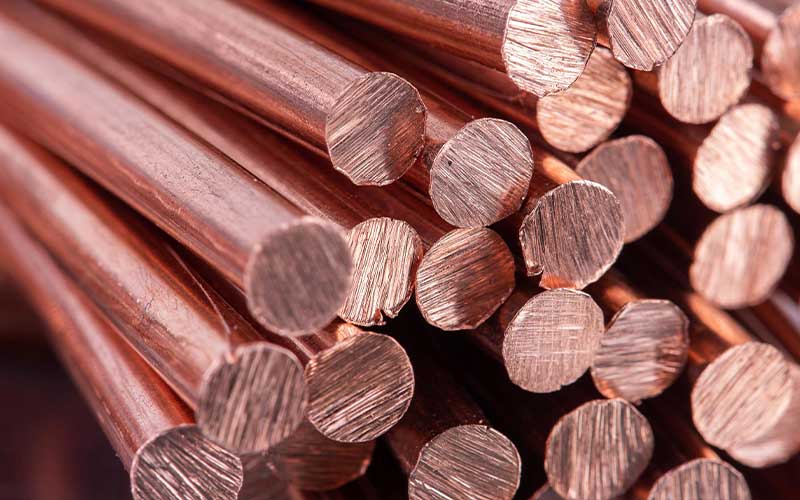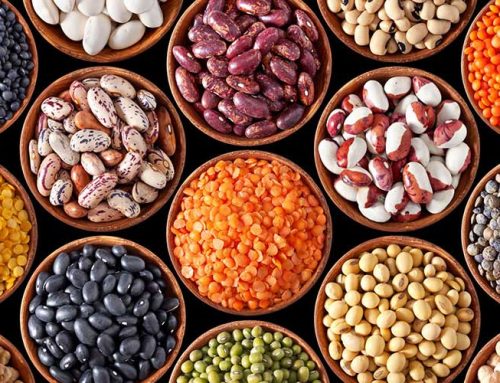Copper is a widely-used metal that has a long history of being used for various purposes. It is a highly-conductive metal that is used in a variety of applications, including electrical wiring, plumbing, construction, and many more.
Copper is also used in various alloys to create brass, bronze, and other metals that have specific properties. This article will explore the uses of copper, the types of copper available, how copper is mined, and how to source copper raw materials.
The Meaning of Copper
Copper is a chemical element with the symbol Cu and atomic number 29. It is a soft, malleable, and ductile metal that has a reddish-orange color. Copper has been used by humans for thousands of years, dating back to the Bronze Age, where it was used to create tools, weapons, and other objects.
Types of Copper
There are several types of copper available, each with its own properties and uses. The most common types of copper are:
- Copper Cathode: Copper cathode is a pure form of copper that is used in the production of various copper products. It is usually produced by electro-refining copper ore.
- Copper Concentrate: Copper concentrate is a type of copper ore that has been refined to remove impurities. It is used in the production of copper products.
- Copper Scrap: Copper scrap is recycled copper that has been used in various products. It is often used in the production of new copper products.
How to Mine Copper
Copper is mined from various sources, including copper ore, copper concentrate, and copper scrap. The process of mining copper involves several stages, including exploration, extraction, processing, and refining.
Exploration
The first stage of copper mining involves exploring the area to determine if there are any copper deposits. This is usually done using geological surveys and drilling. Geologists analyze the rock formations and soil samples to identify potential copper deposits.
Once a potential deposit has been identified, a more detailed survey is conducted to determine the size and quality of the deposit. This may involve drilling test holes and taking samples to analyze the copper content.
Extraction
Once a copper deposit has been found, the extraction process can begin. There are two main methods of extracting copper: underground mining and open-pit mining.
Underground Mining
Underground mining is used to extract copper from deep underground. This involves drilling vertical or horizontal tunnels into the ground to reach the copper deposit. Once the tunnels are in place, miners use explosives to blast the rock and break it into smaller pieces. The copper is then extracted from the rock using chemical processes.
Open-Pit Mining
Open-pit mining is used to extract copper from near the surface of the earth. This involves removing the topsoil and rock layers to expose the copper deposit. Once the copper deposit is exposed, miners use large equipment, such as trucks and shovels, to remove the rock and extract the copper.
Processing
The next stage of copper mining involves processing the copper ore to remove impurities and extract the copper. There are several methods of processing copper ore, including:
Crushing
The first step in processing copper ore is crushing it into a fine powder. This can be done using a variety of equipment, including jaw crushers, cone crushers, and impact crushers.
Grinding
After the copper ore has been crushed, it is ground into a fine powder using a ball mill. The powder is then mixed with water and chemicals to create a slurry.
Flotation
The slurry is then put through a flotation process. This involves adding chemicals to the slurry that attach to the copper particles and float them to the surface. The copper is then skimmed off the surface and collected.
Smelting
The final stage of processing involves smelting the copper. This involves heating the copper to a high temperature in a furnace, which melts the copper and removes any remaining impurities. The molten copper is then poured into molds and allowed to cool, forming solid bars of copper.
Refining
The final stage of copper mining involves refining the copper to remove any remaining impurities. There are two main methods of refining copper: electro-refining and fire-refining.
Electro-Refining
Electro-refining is used to refine copper cathode, which is a pure form of copper used in the production of various copper products. This involves placing the copper cathode in a solution of copper sulfate and passing an electric current through it. The impurities in the copper are attracted to the electrodes and are removed, leaving behind pure copper.
Fire-Refining
Fire-refining is used to refine copper scrap, which is recycled copper that has been used in various products. This involves melting the copper and then skimming off any impurities that float to the surface. The copper is then poured into molds and allowed to cool, forming solid bars of copper.
Mining copper is a complex process that involves several stages, including exploration, extraction, processing, and refining. The type of mining method used depends on the location and depth of the copper deposit. Once the copper has been extracted, it is processed and refined to remove any impurities and create pure copper that can be used in a variety of applications.
Uses of Copper
Copper is used in a variety of applications, including:
- Electrical Wiring: Copper is an excellent conductor of electricity and is used in electrical wiring, as well as in the production of electrical motors, transformers, and other electrical components.
- Plumbing: Copper is used in plumbing systems, including pipes, fittings, and valves. It is corrosion-resistant, which makes it ideal for use in water and gas systems.
- Construction: Copper is used in construction materials, including roofing, gutters, and facades. It is also used in architectural details and sculptures.
- Transportation: Copper is used in the production of automobiles, airplanes, and trains. It is used in the production of radiators, heat exchangers, and other components.
- Coinage: Copper is used in the production of coins, including the penny in the United States.
- Alloys: Copper is used in the production of alloys, including brass and bronze. Brass is used in the production of musical instruments, plumbing fixtures, and decorative objects. Bronze is used in the production of sculptures, statues, and other decorative objects.
- Medicine: Copper is used in medicine as a trace element in the human body. It is used in supplements and medications to treat copper deficiency and other conditions.
- Antimicrobial properties: Copper has natural antimicrobial properties, which makes it useful in medical applications, as well as in the production of antimicrobial coatings for surfaces such as door handles and countertops.
- Jewelry: Copper is used in the production of jewelry, including bracelets, necklaces, and earrings. It is often used in combination with other metals, such as silver and gold, to create unique and beautiful pieces.
HS Codes for Copper
HS Codes, or Harmonized System Codes, are a standardized system used by customs officials around the world to classify goods that are imported or exported. The purpose of HS Codes is to facilitate international trade by providing a common language for customs officials and traders to use when describing goods. Each HS Code is a six-digit number that represents a particular product or category of products.
For copper, there are several HS Codes that apply to different types of copper products. These HS Codes are important because they determine the tariff rate that will be applied to the copper when it is imported or exported. The correct HS Code must be used to ensure that the correct tariff is applied and to avoid delays or penalties.
The HS Codes for copper are as follows:
Copper Cathode: HS Code 7403.11
Copper cathode is a pure form of copper that is used in the production of various copper products. It is usually produced by electro-refining copper ore. HS Code 7403.11 applies to copper cathodes that are at least 99.99% pure.
Copper Concentrate: HS Code 2603.00
Copper concentrate is a type of copper ore that has been refined to remove impurities. It is used in the production of copper products. HS Code 2603.00 applies to copper concentrates that contain at least 20% copper.
Copper Scrap: HS Code 7404.00
Copper scrap is recycled copper that has been used in various products. It is often used in the production of new copper products. HS Code 7404.00 applies to copper scrap that has been processed and is no longer in its original form.
It is important to note that these HS Codes may vary depending on the country of origin or destination. Traders should consult with a customs broker or trade expert to ensure that the correct HS Code is used.
In addition to the HS Codes for copper, there are also several other codes that may apply to copper products, depending on their specific properties or intended use. These codes include:
- HS Code 7406.10 – Copper plates, sheets, and strips, not in coils
- HS Code 7408.11 – Copper bars, rods, and profiles
- HS Code 7410.11 – Copper tubes and pipes
These codes may be used for specific types of copper products, such as copper tubes or bars, that do not fall under the categories of copper cathode, copper concentrate, or copper scrap.
Understanding the HS Codes for copper is essential for traders involved in the import or export of copper products. HS Codes provide a standardized system for classifying goods and determining the appropriate tariff rate. By using the correct HS Code for their copper products, traders can ensure that they comply with all relevant regulations and avoid delays or penalties.
Laws that Regulate Copper Export and Import
Copper is a valuable and strategic commodity that is traded worldwide. As a result, the export and import of copper are regulated by various laws and regulations to ensure fair trade, prevent illegal activities, and protect national security interests. This section will explore some of the laws and regulations that govern copper export and import worldwide.
International Laws and Regulations
There are several international laws and regulations that govern copper trade, including:
- World Trade Organization (WTO): The WTO is an international organization that sets the rules for global trade. It aims to promote free and fair trade by regulating and enforcing trade agreements between its member countries. The WTO oversees the General Agreement on Tariffs and Trade (GATT), which regulates the tariffs and trade barriers applied to copper and other commodities.
- United Nations Framework Convention on Climate Change (UNFCCC): The UNFCCC is an international treaty that aims to combat climate change by reducing greenhouse gas emissions. The UNFCCC includes provisions that regulate the production and trade of commodities that contribute to climate change, such as copper.
- International Chamber of Commerce (ICC): The ICC is a global business organization that promotes free and fair trade. It develops and promotes international trade rules and standards that are used by businesses, governments, and other organizations around the world.
National Laws and Regulations
Each country has its own laws and regulations that govern copper export and import. These laws and regulations are designed to protect national interests, prevent illegal activities, and ensure that trade is fair and beneficial for all parties involved. Some examples of national laws and regulations include:
- Customs regulations: Each country has its own customs regulations that govern the import and export of goods, including copper. These regulations include rules on the documentation required for customs clearance, the payment of duties and taxes, and the inspection of goods.
- Export controls: Many countries have export controls in place to restrict the export of strategic goods, including copper, that could be used for military or other sensitive purposes. These controls may include licensing requirements, export quotas, or prohibitions on certain types of exports.
- Environmental regulations: Many countries have environmental regulations in place that regulate the production and trade of commodities that could harm the environment, including copper. These regulations may include restrictions on the use of certain chemicals in copper production or requirements for the proper disposal of copper waste.
- Labor laws: Some countries have labor laws in place that regulate the production and trade of goods, including copper. These laws may include requirements for fair wages, safe working conditions, and the protection of workers’ rights.
Regional Laws and Regulations
In addition to international and national laws and regulations, there are also regional laws and regulations that govern copper export and import. These laws and regulations are designed to promote regional trade and cooperation while ensuring that trade is fair and beneficial for all parties involved. Some examples of regional laws and regulations include:
- European Union (EU) regulations: The EU has regulations in place that govern the import and export of goods, including copper. These regulations include rules on customs clearance, the payment of duties and taxes, and the inspection of goods.
- North American Free Trade Agreement (NAFTA): NAFTA is a regional trade agreement between the United States, Canada, and Mexico. It includes provisions that regulate the import and export of goods, including copper, between these countries.
- Asia-Pacific Economic Cooperation (APEC): APEC is a regional trade organization that includes countries in the Asia-Pacific region. It has developed trade rules and standards that govern the import and export of goods, including copper, between member countries.
Copper is an important commodity that is traded worldwide. The export and import of copper are regulated by various international, national, and regional laws and regulations that are designed to
How Highland Connections (HLC) Can Help Customers with Copper Trading
Highland Connections (HLC) is a company that specializes in the import and export of copper and copper products. They have extensive experience in the copper trading industry and can help customers with various aspects of copper trading, including sourcing copper raw materials, navigating customs regulations, and ensuring compliance with all relevant laws and regulations.
HLC has a network of suppliers and partners around the world, which allows them to source high-quality copper raw materials at competitive prices. They also have a team of experts who can provide advice and guidance on all aspects of copper trading, including logistics, documentation, and compliance.
In addition, HLC provides customized solutions to meet the specific needs of each customer. They can assist with everything from small-scale orders to large-scale projects, and they can provide support throughout the entire trading process, from sourcing to delivery.
Conclusion
Copper is a versatile and valuable metal that is used in a variety of applications. From electrical wiring to plumbing to jewelry, copper is an essential component in many products. When importing or exporting copper, it is important to understand the various types of copper available, how copper is mined and refined, and the laws and regulations that apply to copper trading.
Highland Connections (HLC) is a company that can provide expert guidance and support for customers involved in copper trading. With their extensive experience and global network of suppliers and partners, HLC can help customers navigate the complexities of the copper trading industry and ensure that they achieve their trading goals.





